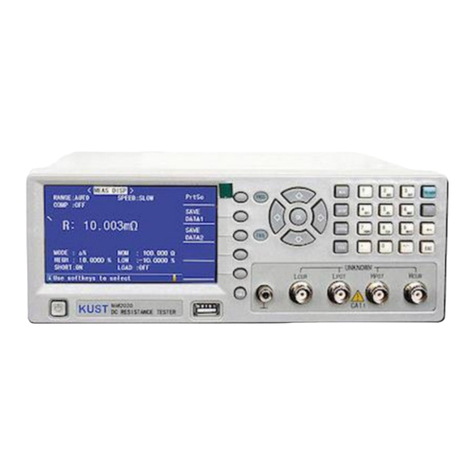PT5020 & PT5030 Operation Manual
3
5.2.5 Volt ADJ................................................................................................................. 5-3!
5.2.6 Wave Disp .............................................................................................................. 5-3!
5.2.7 Trig Mode............................................................................................................... 5-4!
5.2.8 Delay Time ............................................................................................................. 5-4!
5.2.9 BDV Test................................................................................................................ 5-4!
5.2.10 Start Volt .............................................................................................................. 5-5!
5.2.11 End Volt ............................................................................................................... 5-5!
5.2.12 Volt Step............................................................................................................... 5-5!
5.2.13 Comparator........................................................................................................... 5-5!
5.2.14 Position (AREA SIZE, DIFF ZONE, PHASE DIFF) .......................................... 5-5!
5.2.15 Position(PHASE DIFF)................................................................................... 5-6!
5.2.16 DIFF(Limit)( AREA SIZE, DIFF ZONE, PHASE DIFF)........................... 5-6!
5.2.17 DIFF(Limit)( CORONA).............................................................................. 5-6!
5.3 Int. File.............................................................................................................................. 5-6!
5.4 Ext. File............................................................................................................................. 5-8!
Chapter 6 Introduction to [SYSTEM] ........................................................................................... 6-10!
6.1 System............................................................................................................................. 6-10!
6.1.1 Brightness............................................................................................................. 6-11!
6.1.2 Pass/Fail................................................................................................................ 6-11!
6.1.3 Pass Alarm............................................................................................................ 6-11!
6.1.4 Fail Alarm............................................................................................................. 6-11!
6.1.5 Key Sound ............................................................................................................ 6-11!
6.1.6 Hard Copy ............................................................................................................ 6-11!
6.1.7 Password............................................................................................................... 6-11!
6.1.8 Language .............................................................................................................. 6-12!
6.1.9 Theme................................................................................................................... 6-12!
6.1.10 Date .................................................................................................................... 6-12!
6.1.11 Time.................................................................................................................... 6-12!
6.2 I/O Interface .................................................................................................................... 6-12!
6.2.1 I/O......................................................................................................................... 6-13!
6.2.2 PT50xx RS232C interface................................................................................. 6-13!
6.2.3 USB interface ....................................................................................................... 6-15!
6.3 About .............................................................................................................................. 6-17!
Chapter 7 User guide....................................................................................................................... 7-1!
7.1 Use of keys........................................................................................................................ 7-1!
7.1.1 Switch the display page.......................................................................................... 7-1!
7.2 Basic measurement ........................................................................................................... 7-1!
7.2.1 Non-standard test.................................................................................................... 7-1!




























